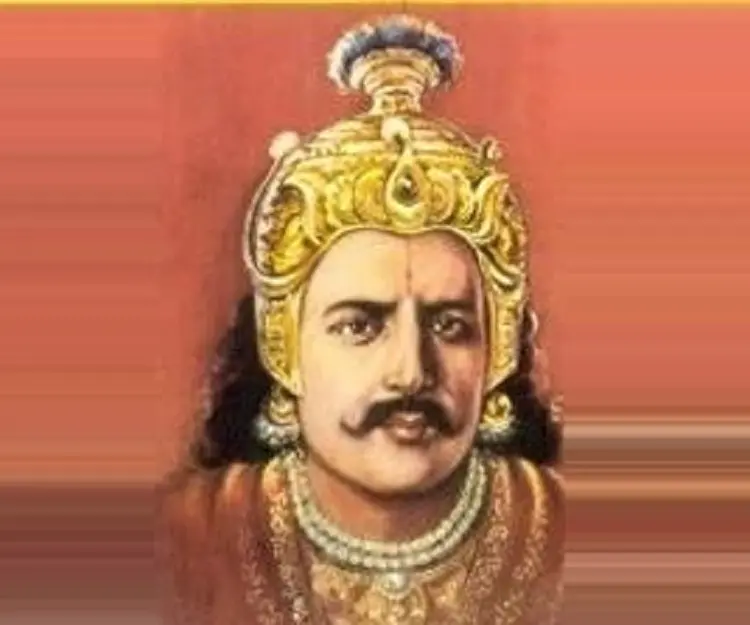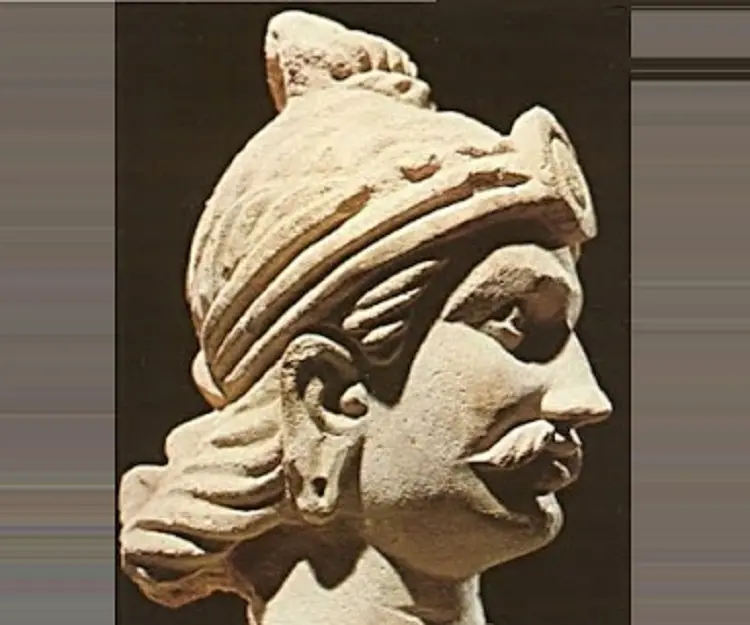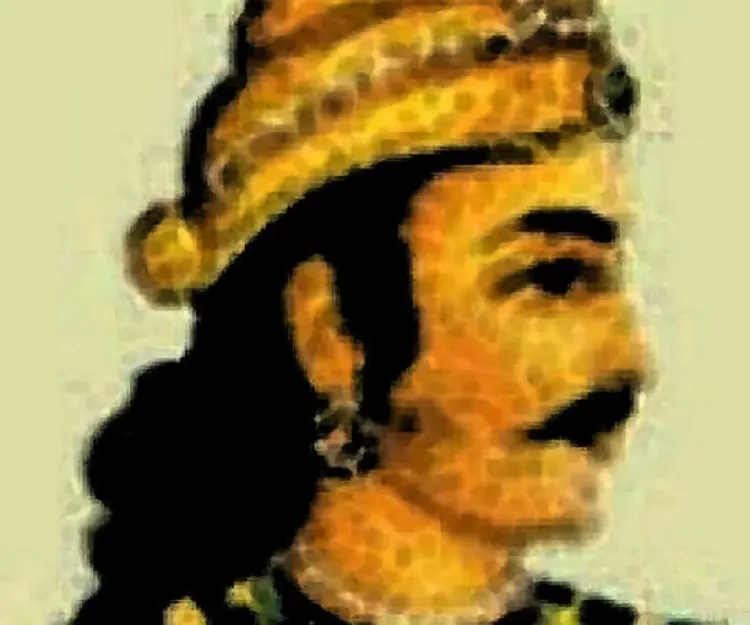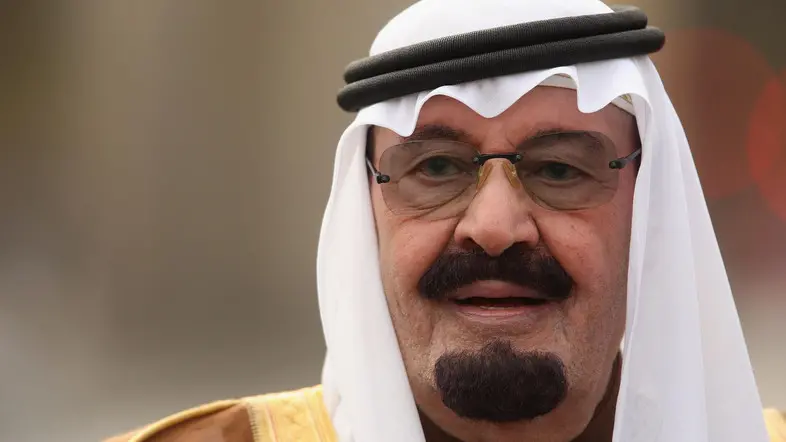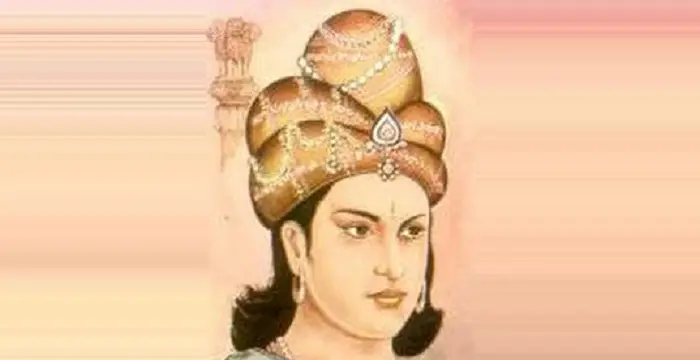
Bindusara - Second Maurya Emperor, Family and Family
Bindusara's Personal Details
Bindusara was the second Mauryan Emperor of India who ruled from c
| Information | Detail |
|---|---|
| Birthday | 320 BC |
| Nationality | Indian |
| Famous | Historical Personalities, Emperors & Kings, Emperors, Kings, Second Maurya Emperor |
| Spouses | Subhadrangi |
| Siblings | Keshnak |
| Gender | Male |
| Father | Chandragupta Maurya |
| Mother | Durdhara |
| Famous as | Second Maurya Emperor |
| Died at Age | 47 |
Bindusara's photo
Who is Bindusara?
Bindusara was the second Mauryan Emperor of India who ruled from c. 297 to c. 273 BCE. He was the son of Chandragupta Maurya, the founder of the Mauryan dynasty who was guided by the famous Indian teacher, economist and philosopher Chanakya, regarded as pioneer of political science and economics in India, in establishing the Maurya Empire. Chanakya also remained the chief advisor of Bindusara. Bindusara was the father of the great Indian emperor Ashoka who reigned over nearly the entire Indian subcontinent from c. 268 to 232 BCE, expanding the empire that had present-day Bangladesh in the east and Afghanistan in the west. According to some sources, Bindusara was an able monarch who was successful in consolidating the empire established by his father, while other sources suggest he successfully campaigned in the Deccan and ended his quest near present-day Karnataka, presumably because of the camaraderie shared by the Mauryas with the Cholas, Cheras and Pandyas ruling the extreme southern territories. He was also successful in suppressing uprisings of people in Takshashila and those of the northern mountain kingdoms against his government by commissioning his able son Ashoka in such pursuit.
// Famous Kings
Sundiata Keita
Sundiata Keita was the founder of the Mali Empire in West Africa. This biography profiles his childhood, early life, struggles, founding of empire, rule, administration, achievements and also gives some fun facts.
Ashoka
Ashoka was the third emperor of the Mauryan Dynasty and ruled almost the entire Indian subcontinent. This biography profiles his childhood, life, reign, achievements and timeline
Murad IV
Murad IV was one of the mighty Sultans in the history of the Ottoman Empire. This biography profiles his childhood, family, accession, rule, administration and timeline.
Sources Accounting Bindusara's Life
The life of Bindusara is not documented in detail like the lives of his father, Chandragupta and son Ashoka. Most of the data accounting his life and rule are found in different Jain legends that detail the life of Chandragupta and Buddhist legends that account the life of Ashoka. Bindusara is also mentioned in the Hindu Puranas.
These legendary accounts dating back to the ancient and medieval times focussing on Chandragupta and Ashoka are not totally reliable and can only serve as inferences of his rule.
The Jain sources mentioning Bindusara includes Jain scholar, poet, and polymath, Acharya Hemachandra’s 12th-century Sanskrit mahakavya ‘Parishishta-Parvan’ and the ‘Rajavali-Katha’ composed by 19th century Jain scholar, Devachandra.
The Buddhist works that mention him includes Samantapasadika, Vamsatthappakasini, Divyavadana, Mahavamsa and Dipavamsa among others.
Legends Associating His Birth, Ancestry & Name
Various Puranas and the ‘Mahavamsa’ affirm that Bindusara was born to the founder of the Mauryan Empire, Chandragupta Maurya. The Jain text called ‘Parishishtaparvan’ written by Hemachandra that dates back to the 12th century CE mentions Bindusara’s mother as Durdhara.
However, there are other sources that differ about Bindusara’s ancestry and provide different information. For instance, according to oldest historical record of Sri Lanka called ‘Dipavamsa’, he was born to the founder of the Shishunaga dynasty of the Magadha Empire, King Shushunaga.
Again, he is mentioned as the son of Nanda and a 10th generation descendant of the Magadha King Bimbisara from the Haryanka dynasty in the prose version of the Indian Sanskrit-language text ‘Ashokavadana’.
Although there is no evidential proof to validate such point, it is also speculated that he was born to a lady of Greek or Macedonian origin as his father Chandragupta went in for a matrimonial alliance with the Seleucids.
Different religious texts mention his name differently. These include ‘Vindusar’ in Hindu texts like ‘Vishnu Purana’ and ‘Bindusaro’ in Buddhist texts like ‘Mahavamsa’ and ‘Dipavamsa’. His birth name is mentioned as Simhasena in the Jain work ‘Rajavali-Katha’. The title Deva-nampriya ("The Beloved of the Gods") was given to him.
Again, the name of Chandragupta’s successor is mentioned as Varisara or Varikara in one of the great Puranas of the Hindus, the ‘Bhagavata Purana’.
Famous Greek rhetorician and grammarian Athenaeus of Naucratis called Chandragupta's son as Amitrochates while Greek geographer, historian and philosopher Strabo called him Allitrochades. Successor of Chandragupta is mentioned as Amitra-ghata meaning slayer of enemies in the 4th century BCE commentary ‘Mahabhashya’.
Legends found in Buddhist and Jain texts mention that Chanakya, the chief advisor and minister of Chandragupta endeavoured to make the monarch immune to any poisoning attempts. In this pursuit he used to mix little bit of poison in the emperor’s food.
Unaware of such fact, Chandragupta shared the poisoned food one day with his pregnant wife who was just seven days away from delivering the couple’s child. Up to this point the legends in texts of both these religions match however the origin of his name differs in these.
Buddhist legends ‘Mahavamsa’ and ‘Mahavamsa Tikka’ mention that as soon as the queen consumed the poisoned morsel, Chanakya arrived and recognising the fact he resolved in saving the unborn child. He thus first cut the head of the queen and thereafter her belly to take out the foetus.
Every day for the next seven days, Chanakya would keep the foetus in the belly of a freshly killed goat and this is how the prince was born. As the prince’s body was marked with drops (bindu) of goat’s blood, he was named Bindusara.
On the other hand, the Jain text ‘Parishishta-Parvan’ mentions that as Chandragupta’s wife Durdhara collapsed after consuming the food, Chanakya entered the room and cut the belly of the dead queen to take out the baby. However, within that time a poison drop (bindu) touched the baby’s head which is why he was named Bindusara, which means "the strength of the drop".
Realm of Bindusara
According to historian Upinder Singh, Bindusara was enthroned sometime around 297 BCE.
Different sources mention the realm he inherited from his father and the conquests he made differently. While many like K. Krishna Reddy opine that he extended his territories, others such as Sailendra Nath Sen and Alain Daniélou hold that he only succeeded in retaining and consolidating the territories acquired by Chandragupta without making any territorial gains.
Tibetian Buddhist scholar, exponent and Lama of the Jonang School, Taranatha mentioned that Bindusara became master of all the territory that fall within the Arabian Sea and the Bay of Bengal with the aid of Chanakya who destroyed kings and nobles of sixteen towns. Such data led some historians to infer it as Bindusara’s conquest of Deccan, however many others imply this as his suppression of uprisings.
Relation with Chanakya
According to Jain work, ‘Rajavali-Katha’, after Chandragupta’s renunciation of the throne and Bindusara’s ascension as the Maurya Emperor, the former left to retire in the forest accompanied by Chanakya.
‘Parishishta-Parvan’ mentions that Chanakya still played the role of prime minister of the new monarch. A legend of this 12th-century Sanskrit mahakavya by Hemachandra narrates about the way Chanakya died.
Subandhu, a minister in Bindusara’s administration was jealous of Chanakya and craved for higher position in the ministry. He poisoned Bindusara’s ears towards Chanakya by telling him that Chanakya cut open his mother’s belly.
Following this, Chanakya took retirement and resolved to practice Sallekhana that is starving until death. However, when the real circumstances and act of Chanakya relating to his birth became clear to Bindusara, he earnestly pleaded Chanakya to resume his position.
Upon Chanakya’s refusal to such request, Bindusara commanded Subandhu to mollify Chanakya, but Subandhu burned Chanakya to death. However, as a result of Chanakya’s curse, Subandhu retired after a short while and become a monk.
Reign
According to ‘Ashokavadana’, there were 500 royal councillors in Bindusara’s administration. It also mentions that Ashoka was sent by Bindusara to siege Takshashila, however without any weapons or chariots.
Soldiers and weapons were then provided to Ashoka by the deities and upon reaching Takshashila he was approached by the residents who told him that they were not against the king but his cruel ministers. Ashoka was successful in containing the revolt in Takshashila and entered the city without any opposition.
‘Ashokavadana’ mentions the name of two officials, Khallataka and Radhagupta, who helped Ashoka in assuming the throne after the death of Bindusara.
The epic poem ‘Mahavamsa’ indicates that Ashoka was inducted as viceroy of Ujjayini by Bindusara.
As a monarch Bindusara was known to have kept good diplomatic relations with the Greeks.
He had a keen interest in philosophy, a taste for culture and tolerance for all sects.
Personal Life & Legacy
According to ‘Mahavamsa’, Bindusara had 101 sons from 16 women of whom Ashoka and the youngest son Tishya were born to the same mother. ‘Ashokavadana’ states that Sushima, Ashoka and Vigatashoka were the sons of Bindusara of whom the latter two were born through a Brahmin lady called Subhadrangi.
Again, Ashoka's mother is named as Janapadakalyani in a legend in ‘Divyavadana’ while she is named as Dhamma in ‘Vamsatthappakasini’.
Bindusara’s time of death and the information about how Ashoka succeeded to the throne differs in different sources. While historical data indicate his death occurred in the 270s BCE, it is suggested to be sometime around 273-272 BCE by Sailendra Nath Sen; around 274 BCE by Alain Daniélou; and around 273 BCE by Upinder Singh.
// Famous Emperors
Sundiata Keita
Sundiata Keita was the founder of the Mali Empire in West Africa. This biography profiles his childhood, early life, struggles, founding of empire, rule, administration, achievements and also gives some fun facts.
Ashoka
Ashoka was the third emperor of the Mauryan Dynasty and ruled almost the entire Indian subcontinent. This biography profiles his childhood, life, reign, achievements and timeline
Murad IV
Murad IV was one of the mighty Sultans in the history of the Ottoman Empire. This biography profiles his childhood, family, accession, rule, administration and timeline.
Bindusara biography timelines
- // 273 BCBindusara’s time of death and the information about how Ashoka succeeded to the throne differs in different sources. While historical data indicate his death occurred in the 270s BCE, it is suggested to be sometime around 273-272 BCE by Sailendra Nath Sen; around 274 BCE by Alain Daniélou; and around 273 BCE by Upinder Singh.
// Famous Emperors & Kings
Sundiata Keita
Sundiata Keita was the founder of the Mali Empire in West Africa. This biography profiles his childhood, early life, struggles, founding of empire, rule, administration, achievements and also gives some fun facts.
Ashoka
Ashoka was the third emperor of the Mauryan Dynasty and ruled almost the entire Indian subcontinent. This biography profiles his childhood, life, reign, achievements and timeline
Murad IV
Murad IV was one of the mighty Sultans in the history of the Ottoman Empire. This biography profiles his childhood, family, accession, rule, administration and timeline.
Xerxes I
Xerxes I (Xerxes the Great) was the fourth and the most famous king of the Archaemenid dynasty of Persia. This biography profiles his childhood, family, personal life, life history, achievements, campaigns, administration, death and other facts.
Sargon of Akkad
Sargon of Akkad, also called ‘Sargon the Great’, ‘Sarru-Kan’ and ‘Shar-Gani-Sharri’, was the founder and first king of the Akkadian Empire. This biography profiles his childhood, life, rule, administration, timeline, and gives some fun facts.
Abdullah of Saudi Arabia
Abdullah bin Abdulaziz Al Saud was the King of Saudi Arabia from 2005 to 2015 and the third wealthiest head of state in the world. Find more facts about his life, childhood and timeline.
Bindusara's FAQ
When was Bindusara died?
Bindusara was died at 2020-04-14
Which age was Bindusara died?
Bindusara was died at age 47
What is Bindusara nationalities?
Bindusara's nationalities is Indian
Who is Bindusara spouses?
Bindusara's spouses is Subhadrangi
Who is Bindusara siblings?
Bindusara's siblings is Keshnak
Who is Bindusara's father?
Bindusara's father is Chandragupta Maurya
Who is Bindusara's mother?
Bindusara's mother is Durdhara
How famous is Bindusara?
Bindusara is famouse as Second Maurya Emperor
